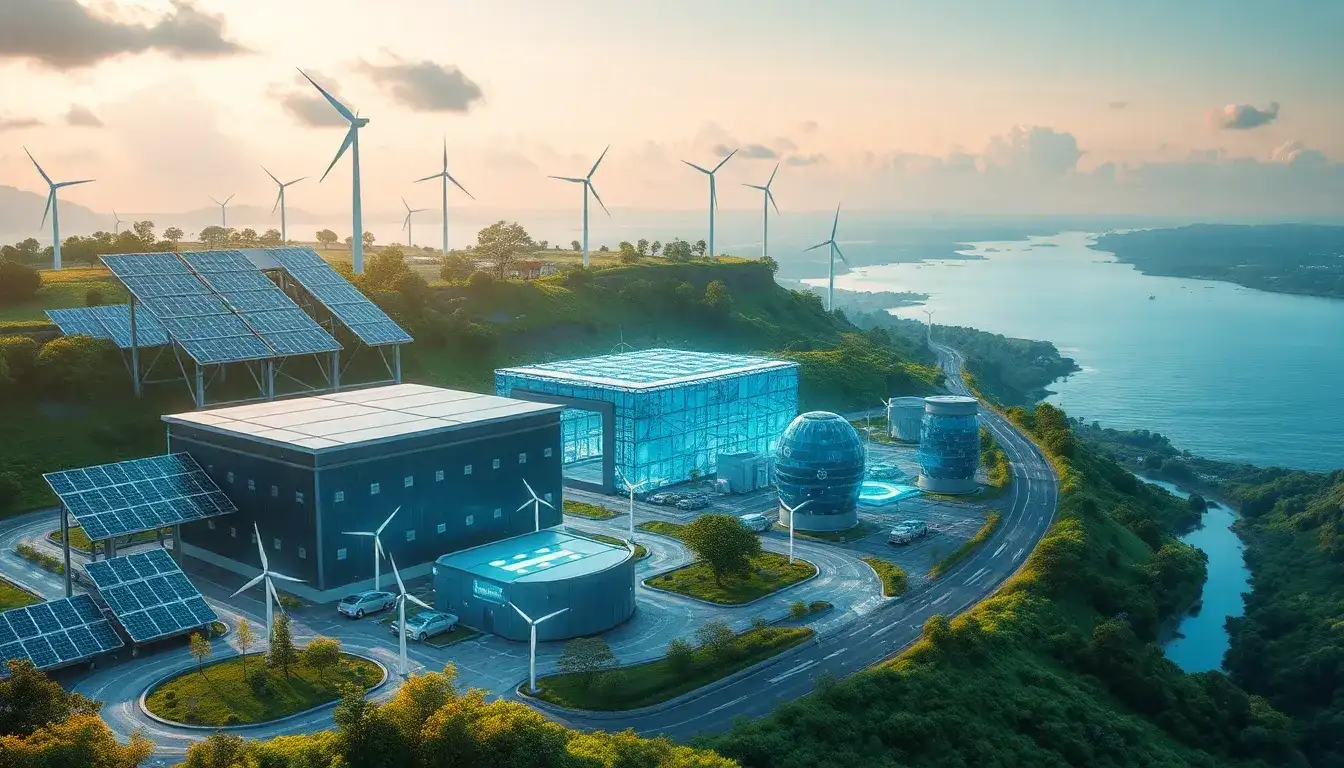
Energy Storage Innovations: Catalysts for the Transition to Renewable Energy
The world is rapidly transitioning from fossil fuels to renewable energy, motivated by the urgent need to combat climate change and meet the increasing demand for electricity. Energy storage technologies are emerging as the cornerstone for this progress, helping to create a cleaner, more efficient, and reliable power infrastructure. These advancements apply not only to large-scale grid solutions but also to residential electricity needs. Most importantly, the latest innovations address critical challenges in the widespread adoption of renewable energy, such as intermittency and the ability to store excess power for later use.
The Importance of Energy Storage Technologies
Among the many challenges faced during the 2024 Atlantic hurricane season, Hurricane Helene was particularly notable. After making landfall as a Category 4 storm in Florida’s Big Bend, Helene moved north into the Appalachian Mountains and Tennessee Valley, causing extensive destruction and widespread power outages. At its peak, the storm left 6 million customers without electricity, with some communities enduring weeks of darkness before power was restored.
As hurricanes and other natural disasters become more frequent and severe due to climate change, the electricity grid faces increasing pressure from damage and high demand. Studies predict that the demand for electric power capacity could reach 7,200 gigawatts by 2040 — a staggering figure. Renewable energy sources like solar, wind, hydrogen, and geothermal require specific weather conditions for consistent generation. However, the ability to store excess power can significantly stabilize the grid, reduce reliance on fossil fuels, and ensure that households and businesses maintain access to electricity.
6 Energy Storage Innovations Driving the Transition to Clean Energy
While technological advancements in renewable energy have been rapid, the broader shift toward clean energy is still ongoing. Here are six energy storage innovations that are acting as catalysts for this transformation:
- Lithium-Ion Battery Storage
Improvements in lithium-ion battery technology represent a significant trend in energy storage. While most commonly linked to electric vehicles, these batteries can also be utilized in various applications, such as forklifts that use lithium and graphite batteries instead of traditional lead-acid types. Weighing between 500 and 2,500 pounds, lithium-ion batteries are known for their high energy capacity, low discharge rates, and quick recharge times. This efficiency is revolutionizing grid-scale energy storage, with ongoing improvements in capacity and cost reduction. - Redox Flow Batteries
Redox flow batteries are emerging as crucial players in the clean energy transition. Designed to last 25-30 years and scalable based on energy storage needs, these batteries store excess energy in chemical solutions contained in separate vessels, making them more adaptable than lithium-ion batteries. In July 2022, China commissioned the world’s largest vanadium redox flow battery, boasting a capacity of 100 megawatts and a storage volume of 400 megawatt-hours, which will enhance electricity supply and integrate renewable energy into the grid. -
Hybrid Energy Storage Systems
The reliability of renewable energy sources can vary; for instance, solar energy is dependent on sunlight, while wind energy relies on wind conditions. This inconsistency has led many to explore hybrid systems that combine multiple energy sources. Iceland is a leading example, generating nearly 100% of its electricity from hydropower and geothermal energy. However, the integration of different storage technologies into one system presents challenges, including interoperability and investment costs. -
Thermal Energy Storage
Geothermal energy is becoming an essential component of the renewable energy mix. Thermal energy storage (TES) systems allow for the storage and later use of geothermal energy for heating and electricity. They can also store excess solar power for use when sunlight is unavailable. TES systems utilize various materials like ice, salt, sand, or wax to store renewable energy. Researchers from national labs, corporations, and universities are exploring TES technologies to reduce costs, decarbonize the electric grid, and improve resilience. -
Hydrogen Storage
Hydrogen storage is vital for the development of hydrogen and fuel cell technologies. Hydrogen can be stored as either a gas or a liquid, requiring different conditions for each. For example, hydrogen gas is best stored in tanks at pressures of 5,000-10,000 pounds per square inch, while liquid hydrogen must be kept at cryogenic temperatures. The U.S. Department of Energy is investigating hydrogen storage for various applications, including light-duty vehicles and portable power devices, offering a path toward greener transportation. -
Distributed Storage
Distributed energy storage systems, such as microgrids or rooftop solar panels, have a direct impact on local communities. These decentralized solutions help alleviate pressure on the grid, enhance energy security, and ensure a more reliable power supply. In response to recent severe weather events and prolonged outages, the Texas Reliability Coalition has initiated an educational program to inform communities about the benefits of microgrids. During hurricanes Milton, Helene, and Beryl, 450 microgrids across six states helped prevent 850 grid disruptions, providing critical electricity to affected areas.
Opportunity Awaits with Cutting-Edge Clean Energy Storage Solutions
Today’s energy storage innovations are paving the way for a cleaner, more sustainable power landscape. From advancements in battery storage technologies to enhanced grid resilience, these solutions are transforming the future of energy.
Original article by NenPower, If reposted, please credit the source: https://nenpower.com/blog/energy-storage-innovations-driving-the-shift-to-renewable-energy-solutions/


